Abstract
This study concerns the identification and correction of deficiencies in methods used to measure inactivation rates of enteric viruses seeded into environmental waters. It was found that viable microorganisms in an environmental water sample increased greatly after addition of small amounts of nutrients normally present in the unpurified seed virus preparation. This burst of microbial growth was not observed after seeding the water with purified virus. The use of radioactively labeled poliovirus revealed that high percentages of virus particles, sometimes greater than 99%, were lost through adherence to containers, especially in less turbid waters. This effect was partially overcome by the use of polypropylene containers and by the absence of movement during incubation. Adherence to containers clearly demonstrated the need for labeled viruses to monitor losses in this type of study. Loss of viral infectivity in samples found to occur during freezing was avoided by addition of broth. Finally, microbial contamination of the cell cultures during infectivity assays was overcome by the use of gentamicin and increased concentrations of penicillin, streptomycin, and amphotericin B.
Full text
PDF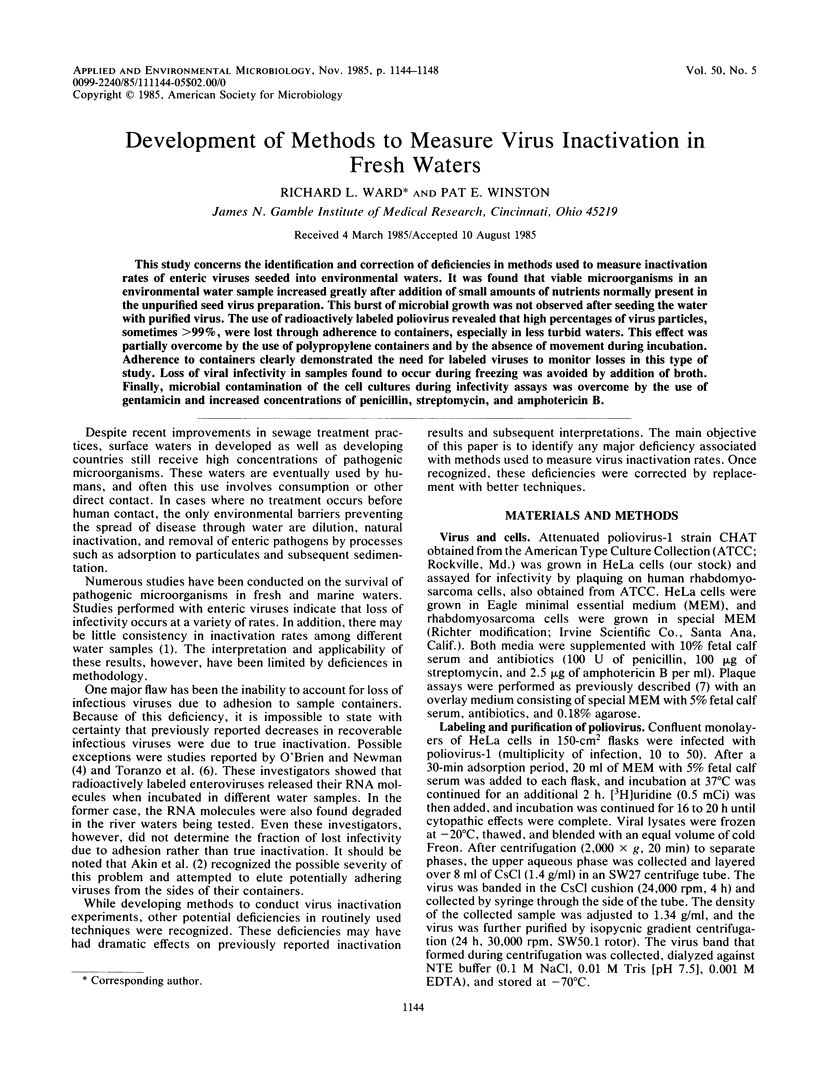
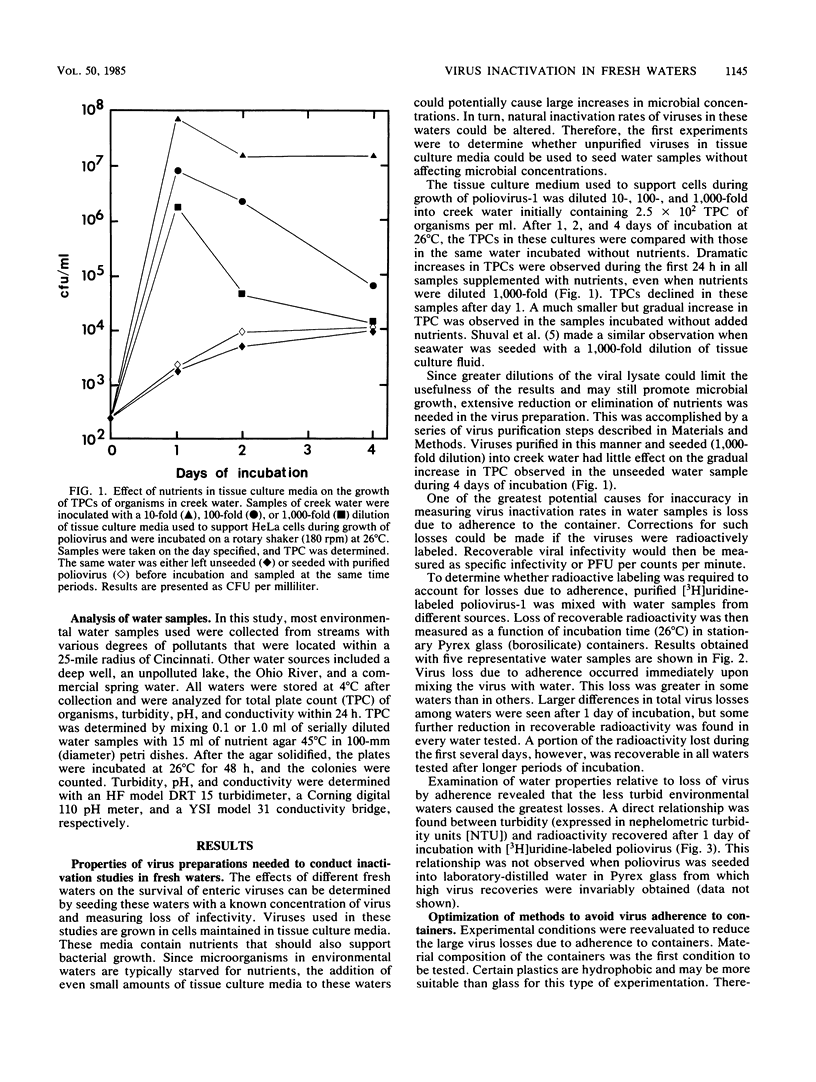
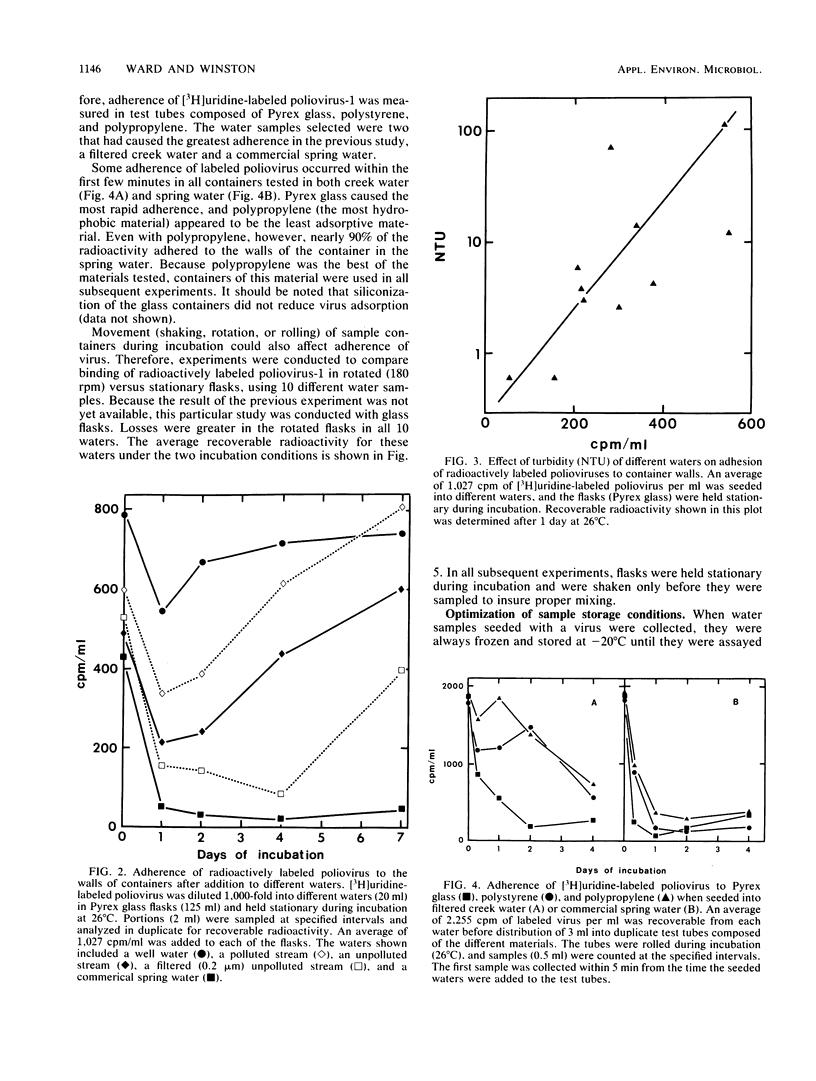
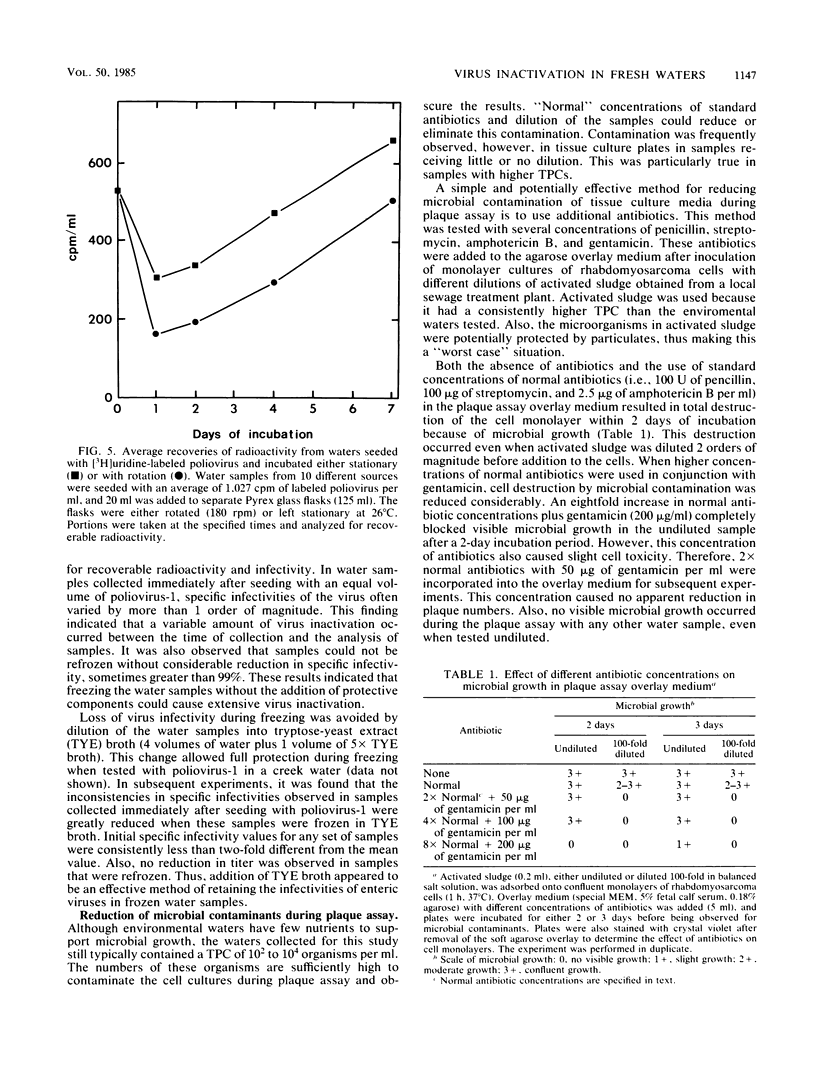
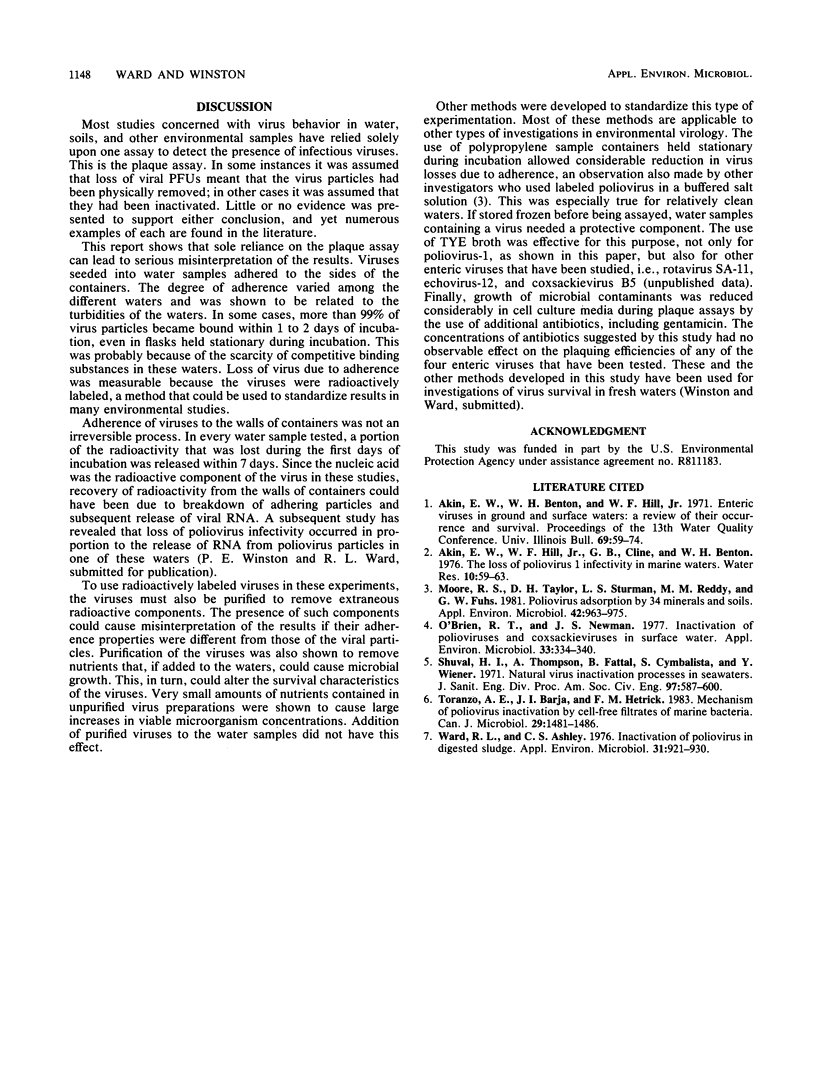
Selected References
These references are in PubMed. This may not be the complete list of references from this article.
- Moore R. S., Taylor D. H., Sturman L. S., Reddy M. M., Fuhs G. W. Poliovirus adsorption by 34 minerals and soils. Appl Environ Microbiol. 1981 Dec;42(6):963–975. doi: 10.1128/aem.42.6.963-975.1981. [DOI] [PMC free article] [PubMed] [Google Scholar]
- O'Brien R. T., Newman J. S. Inactivation of polioviruses and coxsackieviruses in surface water. Appl Environ Microbiol. 1977 Feb;33(2):334–340. doi: 10.1128/aem.33.2.334-340.1977. [DOI] [PMC free article] [PubMed] [Google Scholar]
- Toranzo A. E., Barja J. L., Hetrick F. M. Mechanism of poliovirus inactivation by cell-free filtrates of marine bacteria. Can J Microbiol. 1983 Nov;29(11):1481–1486. doi: 10.1139/m83-228. [DOI] [PubMed] [Google Scholar]
- Ward R. L., Ashley C. S. Inactivation of poliovirus in digested sludge. Appl Environ Microbiol. 1976 Jun;31(6):921–930. doi: 10.1128/aem.31.6.921-930.1976. [DOI] [PMC free article] [PubMed] [Google Scholar]


